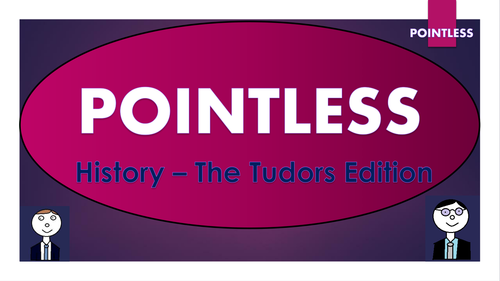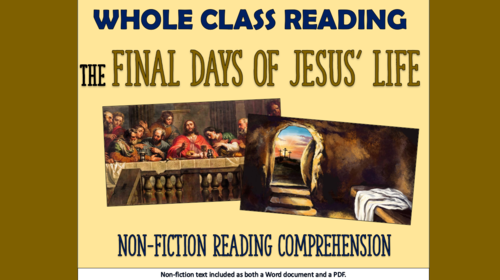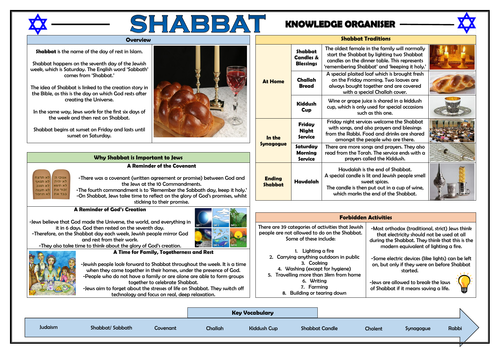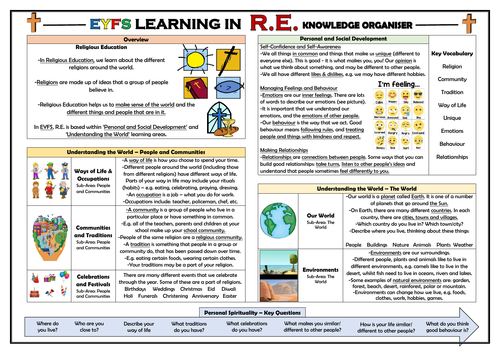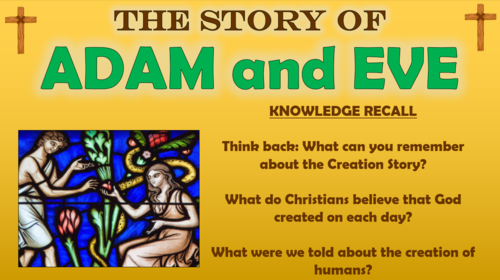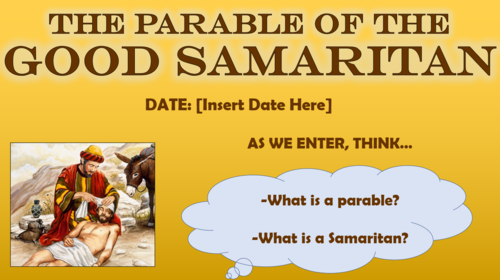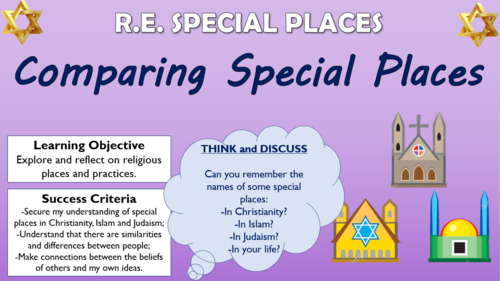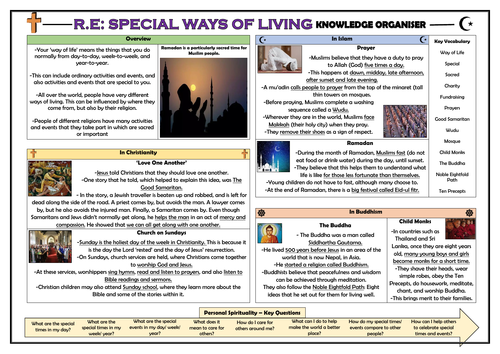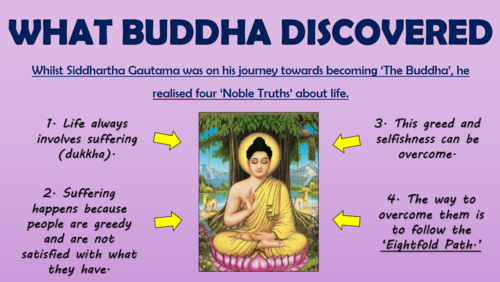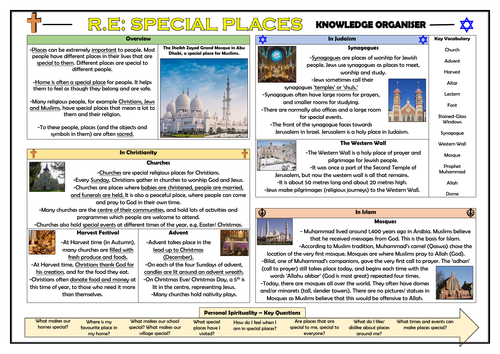
3k+Uploads
1861k+Views
2207k+Downloads
Religious education

Pointless - History - The Tudors Edition
Based on the popular game show 'Pointless', this resource is perfect for use as a starter activity, plenary, or revision tool. Editable, so that you can change to any other topic or change the questions/answers. Containing sound clips, engaging visuals, and suitably challenging questions, this resource is effective at both promoting engagement and enhancing learning.
There are several full rounds of questions to build students' understanding of The Tudors, including:
- Naming the Tudor monarchs and their marriage partners;.
- Identifying famous Tudor events from their descriptions and dates;
- Unscrambling puzzles to identify famous people from the Tudor times;
- Thinking about where people lived in Tudor times.
The nature of the game ensures that this resource can challenge students of all levels.
NOTE: You can buy this resource alone, or in a bundle of 8 Pointless games, for only £1 more!

The Story of the Buddha - Whole Class Reading Session!
This whole class reading session aims to develop children’s comprehension skills through a reading of the story of how Siddhartha Gautama became the Buddha.
The resource pack includes the story text and all of the activities for the session, which the class are guided through via a comprehensive PowerPoint presentation. This is followed by a series of activities aiming to develop children’s retrieval, explanation, inference, prediction and summarising skills. It also contains a vocabulary check immediately after the extract is read to clarify any unfamiliar/ difficult language.
The tasks are comprised of quick-check questions, solo thinking, pair/ group discussions and deeper thinking activities.
The session is best suited for children in KS2, although with minor adaptations it could feasibly be used with slightly older year groups.

Buddhist Monks and Worship - Non Fiction Whole Class Reading Session!
This whole class reading session aims to develop children’s comprehension skills through a reading of a non-fiction text about Buddhist monks and worship.
The resource pack includes the full text and all of the activities for the session, which the class are guided through via a comprehensive PowerPoint presentation. This is followed by a series of activities aiming to develop children’s retrieval, explanation, inference, prediction and summarising skills. It also contains a vocabulary check immediately after the extract is read to clarify any unfamiliar/ difficult language.
The tasks are comprised of quick-check questions, solo thinking, pair/ group discussions and deeper thinking activities.
The session is best suited for children in KS2, although with minor adaptations it could feasibly be used with slightly older year groups.

The Nativity Story - Whole Class Reading Session!
This informative and engaging whole class reading session deepens children’s understanding of the Nativity Story, whilst also developing vital reading comprehension skills such as retrieving, interpreting, inferring and sequencing. I have used these resources as an adaptation to our usual whole class reading provision throughout the lead-up to Christmas.
The resource pack includes the link to the version of the story needed, which is most suitable for children in lower KS2 (although some higher attaining KS1 children may also be able to access it successfully).
This is followed by a series of activities aiming to develop children’s retrieval, explanation, inference, prediction and summarising skills. It also contains a vocabulary check immediately after the extract is read to clarify any unfamiliar/ difficult language.
The tasks are comprised of quick-check questions, solo thinking, pair/ group discussions and deeper thinking activities.
The resources have been received well by teachers and children, with a number of collegues choosing to split the content over two sessions.
All images are licensed for commercial use.

Buddhist Stories of Anger and Patience - Whole Class Reading Session!
This whole class reading session aims to develop children’s comprehension skills through a reading of Buddhist stories teaching moral messages about anger and patience.
The resource pack includes both short stories and all of the activities for the session, which the class are guided through via a comprehensive PowerPoint presentation. This is followed by a series of activities aiming to develop children’s retrieval, explanation, inference, prediction and summarising skills. It also contains a vocabulary check immediately after the extract is read to clarify any unfamiliar/ difficult language.
The tasks are comprised of quick-check questions, solo thinking, pair/ group discussions and deeper thinking activities.
The session is best suited for children in KS2, although with minor adaptations it could feasibly be used with slightly older year groups.

The Final Days of Jesus' Life - Whole Class Reading Session!
This whole class reading session aims to develop children’s fluency and comprehension skills through reading about the final days of Jesus’ life. The non-fiction text that they read is adapted from a BBC Bitesize article about Jesus’ last days.
The reading is followed by a series of activities aiming to develop children’s VIPERS skills: vocabulary, inference, prediction, explanation, retrieval, sequencing and summarising. It also contains a vocabulary check immediately after the extract is read to clarify any unfamiliar/ difficult language.
The tasks are comprised of quick-check questions, solo thinking, pair/ group discussions and deeper thinking activities. The text to read is provided in both PDF and Word format.
The session is best suited for children in upper KS2, however it could easily be used with KS3 students and could feasibly be utilised with slightly younger children, depending upon the individual context of your class.

Shabbat - Knowledge Organiser/ Revision Mat!
This detailed and visually-appealing resource offers a complete reference point for children, teachers and other stakeholders when covering the topic of ‘Shabbat’ in religious education. It contains comprehensive sections under the following headings:
-Shabbat Overview;
-Why Shabbat is Important to Jews;
-Shabbat Traditions;
-Forbidden Activities during Shabbat;
-Key Vocabulary.
Key words and ideas are underlined for easy reference. It was originally created for those teaching and learning in KS1/ lower KS2. The resource is designed to be printed onto A3 or A4, and is provided as both a PDF and a Word version (so that you can edit if you want to).

EYFS Learning in Religious Education - Knowledge Organiser!
This clear, detailed and visually-appealing resource helps to detail and categorise the foundation Relgious Education learning that takes place in the EYFS stage.
It is an important resource for EYFS teachers and parents, but also Religious Education subject leaders to aid the development of a clearly-mapped and well-sequenced R.E. curriculum across the school.
This organiser groups the R.E. related learning into the relevant EYFS areas of learning, including:
-Personal and Social Development;
-Understanding the World;
There is also a section with key questions for developing children’s ‘Personal Spirituality’, and another section listing ‘Key Vocabulary.’
The resource is designed to be printed onto A3, and is provided as both a PDF and a Word version (so that you can edit if you want to). All images used are licensed for commercial use and are cited on a separate document (included).

Advent - Collective Worship Session!
This original and purposeful collective worship session aims to teach children about the meaning of advent.
-Understanding what advent is and when it is celebrated;
-Understanding different symbols and rituals of advent, for example advent wreaths and christingles, aided by an informative video;
-Learning that there are different types of ‘waiting’, and that some types of waiting are more difficult than others, through an interactive task;
-Understanding that Christians also view advent as a time to reflect on the ‘waiting’ of Jesus’ return;
-Reflecting on what has been learnt through the session;
-Ending with a prayer and a hymn about leadership.
This worship is tried and tested, and has always been really well received in the past. It is comprehensive (20 slides in total) and the slides are visually engaging and well-presented, and the subject matter is tailored to the interests and needs of young people.
No further resources are required except a beanbag or small ball for the challenge activity - everything else that you need to present the worship is included.

Adam and Eve - Assembly/ Collective Worship!
This engaging and original assembly/ collective worship session aims to provide children with an understanding of the parable of the story of Adam and Eve and ‘The Fall’, with a key focus on its moral meanings and how they can be applied in modern life.
The colourful and comprehensive presentation guides children through:
-Remembering what the Bible teaches about creation in Genesis 1;
-Watching a video about the creation of humans and understanding that Christians believe that Man was made in God’s image;
-Reading the story of ‘The Fall’ (using the script provided - this works best when children read/ play the different roles);
-Demonstrating an understanding of the story by answering questions about the plot events;
-Reflecting on the deeper meanings of the story - how people are imperfect and have free will, but have a responsibility to look after the world around them;
-Considering how these teachings apply in the modern world;
-Considering how they can apply the key message to their own lives;
-Participating in related song and prayer.
This worship session is tried and tested, and has always been really well received in the past. The slides are visually engaging and well-presented, and the subject matter is tailored to the interests and needs of young people. If everything is kept in, it takes around 30 minutes to deliver, but you may choose to edit or amend some elements of the session.
All links to videos/ hymns are included in the PowerPoint as hyperlinks. No further resources are required - everything that you need to present the session is included!

Shahada - The First Pillar of Islam!
In this engaging and comprehensive lesson, students are introduced to the first pillar of Islam - the Shahada.
Children learn through collating their collective prior knowledge, watching an interesting video (hyperlinked) and answering comprehension questions about the Shahada. They then link this knowledge to their own personal spirituality, considering the important ‘pillars’ and intentions that are important to them and their communities.
The lesson is tried and tested, and is easy for teachers and students to follow. It contains a comprehensive 16-slide Powerpoint which offers a step-by-step guide throughout the lesson, in addition to the worksheet template for the creative ‘pillars of my community’ activity (in both Word and PDF). Challenge activities are provided in order to enrich learning for higher-attaining learners.
In the past, I have used this lesson with children in upper Key Stage 2 (years 5 and 6). The key learning is aligned with national expectations for RE, and also the content prescribed by most diocese regions. All images are licensed for commercial use, and are cited on the final slide.

Salah - The Second Pillar of Islam!
In this engaging and comprehensive lesson, students are introduced to the second pillar of Islam - Salah.
Children learn through collating their collective prior knowledge, watching an interesting video (hyperlinked) and answering comprehension questions about the Salah. They then develop their understanding by learning about the daily prayer routine and the ‘wudu’ (washing ritual).
The lesson is tried and tested, and is easy for teachers and students to follow. It contains a comprehensive 17-slide Powerpoint which offers a step-by-step guide throughout the lesson, in addition to the worksheet template for the creative ‘routines’ activity (in both Word and PDF). Challenge activities are provided in order to enrich learning for higher-attaining learners.
In the past, I have used this lesson with children in upper Key Stage 2 (years 5 and 6). The key learning is aligned with regional expectations for RE, and also the content prescribed by most diocese regions. All images are licensed for commercial use, and are cited on the final slide.

The Good Samaritan Assembly/ Collective Worship!
This engaging and original assembly/ collective worship session aims to provide children with an understanding of the parable of The Good Samaritan, with a key focus on its moral meanings and how they can be applied in modern life.
The colourful and comprehensive presentation guides children through:
-Considering the meaning of the terms ‘parable’ and ‘Samaritan’;
-Understanding the context of Samaritans and Jews in biblical times;
-Reading the story (using the script provided - this works best when children read/ play the different roles);
-Demonstrating an understanding of the parable by answering questions about the plot events;
-Reflecting on the deeper meanings of the parable;
-Noting how ‘people walking by’ still exists in the modern day (perfectly shown using a video - hyperlinked);
-Considering how they can apply the key message to their own lives;
-Participating in song and prayer.
This worship session is tried and tested, and has always been really well received in the past. The slides are visually engaging and well-presented, and the subject matter is tailored to the interests and needs of young people. If everything is kept in, it takes around 30 minutes to deliver, but you may choose to edit or amend some elements of the session.
All links to videos/ hymns are included in the PowerPoint as hyperlinks. No further resources are required - everything that you need to present the session is included!

Hajj - The Fifth Pillar of Islam!
In this engaging and comprehensive lesson, students are introduced to the fifth pillar of Islam - Hajj, the annual pilgrimage to the city of Makkah.
Children learn through collating their collective prior knowledge, understanding where Makkah is and why it is holy, learning key facts about the rules and process of Hajj and demonstrating their understanding through various tasks, including explaining the process of Hajj through a storyboarding template. They also consider their own personal spirituality, discussing concepts such as perseverance and respect.
The lesson is tried and tested, and is easy for teachers and students to follow. It contains a comprehensive 17-slide Powerpoint which offers a step-by-step guide throughout the lesson. A reading about the Hajj process is also provided, in addition to the template for the main activity (in both Word and PDF).
In the past, I have used this lesson with children in upper Key Stage 2 (years 5 and 6). The key learning is aligned with regional expectations for RE, and also the content prescribed by most diocese regions. All images are licensed for commercial use, and are cited on the final slide.

KS1 RE - Comparing Special Places!
In this engaging lesson, students develop their understanding of special places in Christianity, Islam and Judaism. It was originally taught as a part of an RE unit on ‘Special Places’ and so assumes some prior knowledge of churches and mosques (I have uploaded the prior lessons on this). The lesson introduces synagogues.
The learning is guided by a clear and colourful PowerPoint presentation, which guides students through the following step-by-step journey:
-Knowledge recall - gauging what children already know about special places in Christianity and Islam;
-Being introduced to synagogues and their key features;
-Using a provided worksheet/ template to find similarities and differences between churches, mosques and synagogues;
-Creating their own special places;
-Completing a plenary activity to assess their understanding;
-Self-reflecting on the extent to which they feel they have met the learning objective.
This resource pack includes the comprehensive PowerPoint presentation (23 slides) and the worksheet (provided in both Word and PDF). There is everything that you need here to teach the lesson, but you may wish to have some cardboard, shoeboxes etc. available for the creative task.
In the past, I have used this lesson with children from across Key Stage 1 - the key learning is aligned with curriculum expectations for RE, and also the content prescribed by most diocese regions. All images are licensed for commercial use.

Sawm - The Fourth Pillar of Islam!
In this engaging and comprehensive lesson, students are introduced to the fourth pillar of Islam - Sawm, the act of fasting during the period of Ramadan.
Children learn through collating their collective prior knowledge, learning key facts, watching an interesting video (hyperlinked) and demonstrating their understanding through various tasks, including designing their own Iftar plate. They also consider their own personal spirituality, discussing concepts such as self-discipline and control.
The lesson is tried and tested, and is easy for teachers and students to follow. It contains a comprehensive 17-slide Powerpoint which offers a step-by-step guide throughout the lesson. The template is also provided for the Iftar task (in both Word and PDF). Challenge activities are provided in order to enrich learning for higher-attaining learners.
In the past, I have used this lesson with children in upper Key Stage 2 (years 5 and 6). The key learning is aligned with regional expectations for RE, and also the content prescribed by most diocese regions. All images are licensed for commercial use, and are cited on the final slide.

Zakah - The Third Pillar of Islam!
In this engaging and comprehensive lesson, students are introduced to the third pillar of Islam - Zakah.
Children learn through collating their collective prior knowledge, watching an interesting video (hyperlinked) and answering comprehension questions about Zakah. They then develop their understanding by learning about why Muslims give Zakah and how it benefits others, before comparing these ideas with their own personal views on generosity and charity.
The lesson is tried and tested, and is easy for teachers and students to follow. It contains a comprehensive 18-slide Powerpoint which offers a step-by-step guide throughout the lesson. Challenge activities are provided in order to enrich learning for higher-attaining learners.
In the past, I have used this lesson with children in upper Key Stage 2 (years 5 and 6). The key learning is aligned with regional expectations for RE, and also the content prescribed by most diocese regions. All images are licensed for commercial use, and are cited on the final slide.

RE - Special Ways of Living Knowledge Organiser!
This clear, detailed and visually-appealing resource offers a complete reference point for children learning or revising knowledge of ‘special ways of living’ in RE. It contains comprehensive sections on:
-Overview - The way of life for different people;
-In Christianity - ‘Love One Another’ and Church on Sundays
-In Islam - Prayer and Ramadan;
-In Buddhism - The Buddha and Child Monks;
-Personal Spirituality - Key Questions;
-Key Vocabulary.
The resource is designed to be printed onto A3, and is provided as both a PDF and a Word version (so that you can edit if you want to). All images used are licensed for commercial use and are cited on a separate document (included). It is most appropriate for KS1 and lower KS2 children.

The Buddha - The Eightfold Path!
In this engaging lesson, students gain a deeper understanding of the Noble Eightfold Path - the eight practices governing the lives of Buddhists.
The learning is guided by a clear and colourful PowerPoint presentation, which guides students through the following step-by-step journey:
-Defining what the Eightfold Path is;
-Breaking down the different practices that make up the Eightfold Path;
-Establishing why Buddhists follow the Eightfold Path;
-Thinking about how they can apply the principles of the Eightfold Path to their own lives;
-Considering a deeper thinking extension question;
-Completing a plenary to assess their understanding.
This resource pack contains a comprehensive Powerpoint, alongside an eye-catching worksheet.
In the past, I have used this lesson with children from across Key Stage 2 - the key learning is aligned with curriculum expectations for RE, and also the content prescribed by most diocese regions. All images are licensed for commercial use.

RE - Special Places Knowledge Organiser!
This clear, detailed and visually-appealing resource offers a complete reference point for children learning or revising knowledge of ‘special places’ in RE. It contains comprehensive sections on:
-Overview - How places can be special;
-In Christianity - Churches, (and also churches during Harvest and Advent);
-In Judaism - Synagogues and The Western Wall;
-In Islam - Mosques;
-Personal Spirituality - Key Questions;
-Key Vocabulary.
The resource is designed to be printed onto A3, and is provided as both a PDF and a Word version (so that you can edit if you want to). All images used are licensed for commercial use and are cited on a separate document (included). It is most appropriate for KS1 and lower KS2 children.

